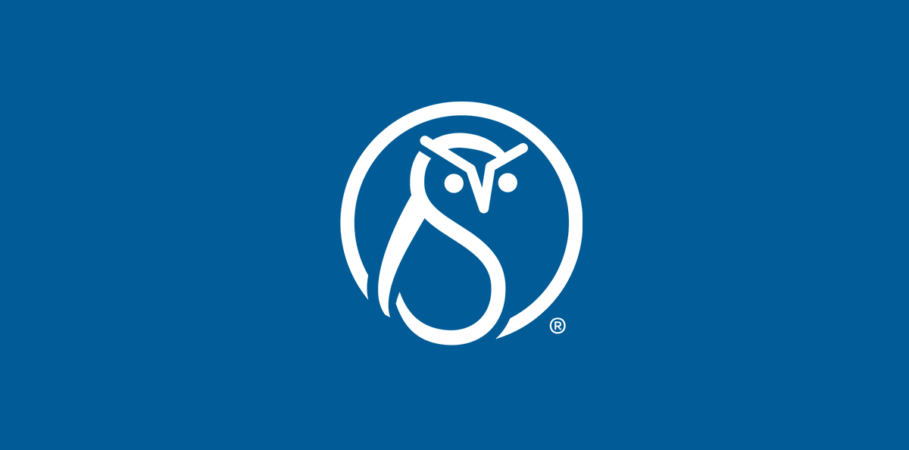The rise of content ops (podcast)
Podcast: Play in new window | Download
Subscribe: Apple Podcasts | Spotify | Amazon Music | Email | TuneIn | RSS
In episode 111 of The Content Strategy Experts podcast, Sarah O’Keefe and Rahel Bailie of Content, Seriously discuss the rise of content ops.
“If you want a better user experience and more customer loyalty, you need accurate content.”
– Rahel Bailie
Related posts:
Twitter handles:
Transcript:
Sarah O’Keefe: Welcome to The Content Strategy Experts podcast brought to you by Scriptorium. Since 1997, Scriptorium has helped companies manage, structure, organize and distribute content in an efficient way. My name is Sarah O’Keefe. And I’m your host today. In this episode, we discussed the rise of ContentOps with Rahel Bailie of Content, Seriously. Rahel, welcome. I’m so happy to have you here on the podcast.
Rahel Bailie: Well, I’m delighted to be here on the podcast too. I thought you’d never ask.
SO: And here we are, finally. So yeah. I mean, I know who you are, but for our listeners, tell us a little bit about yourself and about Content, Seriously, and what you’re doing here.
RB: I wish I had done such a professional job as you did on introducing. So I’ve been doing ContentOps since probably 15 years ago. I’ve found references in my old slide decks to content operations, except nobody knew what it was. And that kind of went in one ear and out the other. So for many years, I’ve been under the rubric of content strategy, have been advocating for content operations to do things more efficiently. I was a consultant from 2002 until shortly after I came to the UK. And now that I’ve got my citizenship, I went back to consulting. It seems to suit me the best. And I worked in all areas, from technical writing and very technical writing to guidance writing, to marketing writing over the years. And once I went into consulting, then I turned my talents to diagnosing in client situations and finding more efficient ways for them to produce their content.
SO: So how do you define ContentOps? I mean, it’s been out there as you said for a while, but I think you’ve got one of the sort of cleaner definitions of what this is. So what’s your definition of ContentOps?
RB: So I’ve been refining it and refining it. And right now, it’s refined to the statement that ContentOps is a set of principles. And I think that’s important. It’s principles that we use to optimize content production and to leverage content as business assets to meet business objectives. It’s all about efficiency.
SO: And so what are some of the basic things that would drive an organization towards ContentOps?
RB: So I have a theory that there are six kind of meta business drivers and everything else is a subset of that. So if you want to reach one of these business goals, you’re going to need some sort of operating model that is slick and clean and efficient to be able to do that. So out of those six, there’s the one like reduced time to market, while reducing time to market means producing content in a better, faster way, expanding your reach. So as soon as you go into other countries, now you have localization issues. And if you don’t want to break the bank with your translation, your language service provider on translation costs, you need to get your source content in order, risk management. So compliance, regulatory, all those things.
RB: If you don’t want to get sued or shut down or whatever is the case in your industry, you want to have that all together, you need a good operating model. The next one would be a better user experience. And if you want better user experience and more customer loyalty and so on, you need accurate content. So you need content that comes from the same place. So you’re not duplicating it. And then having to maintain all those duplicate copies, which comes under content operations. And there’s a couple others, but you get the idea that anything that you do that involves having a content component, you want to manage your content really well because otherwise you’re going to be lost.
SO: So it’s almost like maturity, right? It’s a mature content development process as opposed to this, just throw some stuff up against the wall and then copy and paste it over here and then copy and paste it again. And did I mention copy and paste?
RB: Anything that says copy and paste, or I track it in a spreadsheet. Exactly, right? So I’ve seen places that had over 50 spreadsheets and the guy who was supposed to be the manager and all he did was manage spreadsheets. There was another company that was doing a retail product and online so that they’re a retail chain and they’re out of business now, not surprisingly. 99 spreadsheets to manage their content. It was ridiculous. So this idea of being able to do things more efficiently. So can you imagine on the code side having, I don’t know, a hundred developers sitting around, they’re all writing their own spaghetti code and they’re in their copying and pasting it all over again and forgetting to change the version number and all those things that happen.
RB: Well, that’s what’s still happening in content in a lot of places. And I get told by people, oh, can you go and see what cool Company A is doing for content? And I’ll say, well, I just happened to speak to someone from there last week or last month or whatever, and they’re coming to me because it’s a <bleep> show. So even though they’re out there, we have our book and we have our method and we have our whatever. It doesn’t apply to content.
SO: Yeah. People come to me a lot and say things like, what CMS should I buy? Or what CMS has the biggest market share? Who should we pick? And what they want me to tell them is, oh, this one is doing really well in the market. And depending on my mood of the day, my default answer when they say what CMS has the biggest market share, my default answer is actually Excel.
RB: Yes. Because as Jeff Eaton said in a discussion I had with him recently, technically, that’s a headless CMS because it’s a different rendering engine. If you put it into PowerPoint, PowerPoint is the CMS.
SO: We don’t use bad words like PowerPoint on this show.
RB: No. You told about all the four letter words I could not use, but PowerPoint has more than four letters.
SO: I’m sorry. I thought PowerPoint was implied. The session you’re talking about was a webcast on headless CMS that you did with Jeff Eaton. And we will add that to the show notes so that people can find it. I wanted to ask you why now? And because you’re absolutely right, you’ve been talking about ContentOps for a while, and now it seems as though this concept or this buzzword or whatever is gaining traction. So why? What changed in the market? Why is the market ready now to talk about ContentOps?
RB: Okay. I’m going to answer this in two parts and the first part is very brief. And if you go back to the early 2000s, who had content problems? So I remember the Cisco had a guy go in and they said they had over a million pages and it was complete mess because everything was just pages done individually and thrown up onto the web. And then they had this million pages and they had to have someone come in and organize them and put together a taxonomy and whatever. So unless you were a huge SAP, Cisco, whatever, you didn’t have a content operations problem, really, because you had a 10 page website, maybe. Now, there’s a company called Gather Content, who said that when they were first getting into this business, they were creating this piece of software where people could kind of perk their content until the website was built.
RB: And they built their software to handle, 20 to 200 pages. And next thing, within a few years, they’re being asked to support 20,000 pages and people aren’t using it as a temporary stopgap anymore. So they had to redo their whole code base to make this more robust. So when you look at that kind of, oh, we went from 20 pages to 200 to 20,000 and 200,000, you can see how that complexity, well, the scale is increased greatly. The complexity, because you’ve got, take the iPhone, well, just because there’s an iPhone, what’s the latest one? 14 or something? That doesn’t mean you can ditch all the support material for a 13, 12, 11, 10, nine, eight. You have to still have it out there. So how do you do all this multichannel publishing and omnichannel, and now we’ve got conversation design content and all sorts of content genres that didn’t exist.
RB: And they all have to work together. And one of the things I do with my students at the university is, we have a course called content and complex environments. And I create eight teams, three people each, eight teams, 24 students, great. They all go and produce a little piece of content towards a fictional product. And then I bring them back together and they have to coordinate everything. And they say it’s so hard. And it’s not the creating the content. It’s the coordinating with seven other teams. So if you take this and you multiply that out into any content environment, you get complexity and you get the need to have a tight operating model. You can’t take the operating model for software development and apply it to content. It’s not the same thing. You can’t take data ops and apply it to ContentOps. So you have to come up with your own efficient way of working.
RB: And that’s why it’s now because we’ve reached that, is that peak dirt, they used to say? We’ve hit that pinnacle of like, oh my gosh, my stuff is everywhere. We are breaking all the rules and whatever those rules may be in your particular industry, regulatory rules, or we racked up content debt. We don’t have the quality. We are not checking accuracy. We don’t have time. We don’t have time. We don’t have time. And now they’re saying, okay, well, we have to get more efficient than this. This copy and paste stuff has got to go.
SO: So looking back on this, when you look at where we are right now with ContentOps versus some of the stuff that you were looking at a while back, 10 or 15 years ago, when you look back, has anything changed? I mean, I know your definition has changed a little in that you’ve refined it or tightened it or whatever, but has ContentOps itself changed over the past 10, 15 years?
RB: Yes. In a couple of ways. So one is around tooling. If you look back 15 years ago, we barely had any tooling, production grade tooling. So right now, even today, there are lots of companies that they throw Microsoft Word or Google Docs at, and then expect them to go and do content production the way you would keep pace with the agile team. But here are some basic tools that are really meant for casual business use and do your best with them. And we know that, that doesn’t work anymore, but now we have some tools where we can say, actually, you have this, or you have this, you’ve got a Gather Content. You have a CCMS, you’ve got a PIM. You’ve got all these different things that are out there that are starting to come up, that you could use for a better operating model.
RB: And we have workflow modules that you could apply to things so that you’re not tracking things in a spreadsheet. So that’s changed. But also I think the locus of control has changed because now we have product owners and product managers and they often have the budget. And so how do you have to go about implementing is different because you have to keep up with what they’re doing and you have to convince them that content deserves its own operating model. And that’s a hard sell. It’s a really hard sell right now.
SO: So what’s next? When you look forward at the next, well, I’m not going to ask for 15 years because that’s ludicrous, but how about three to five? If you look into the future in the short-term, medium-term, whatever that is, what do you think is next? What’s coming down the pipe in ContentOps that’ll be interesting and fun and exciting to work on?
RB: Well, that’s a loaded question. When they show those curves where they show the early adopters and it’s starting to kind of, it’s at the bottom of the curve on the left and then there’s this line up and then at the other end going down, it’s the late adopters. So I think we’re so far at the beginning that for most organizations, nothing will change. There’s still going to be limping along. But I think what’s going to start happening soon is that there will be things that happen and when I say things that happen, it could be that somebody got sued. Somebody missed a deadline and got fired, those kinds of things that, somebody lost their funding because something didn’t happen on time. So there will be something that tips them over into the edge where they go, ugh, we should have listened.
RB: And then as they move around the industry, they will take their experience with them and start implementing things differently. And I say this because I had a former product manager where I used to work and he’s off doing his own thing now. And he called me and said, “I want a guy like Chris.” Chris was the content strategist who worked for me. And he said, I want him because our product is content and we need to manage it in a different way. We have to be really good about how we manage our content, it has to be done really well. And there are lots of moving parts and what would I call that person and where would I find one of them? Right. So here’s somebody who lived through this non successful experience with me.
RB: But when he went into his own business, decided he wasn’t going to make that happen again, right? He was going to do it right. So he’s looking for the right kind of person, the right shape of person to come in and do their content operations. And I just spoke with another fellow who runs… He’s one of co-founders of career.pm. So it’s for product managers. He got so excited and said, oh my gosh, product managers need to know about this. And so we’re trying to put together this deck on what the benefit will be for product managers if they will pay attention to ContentOps and we came to certain conclusions, some kind of sad conclusions, which was that, for them, content is like somebody showing up with a baby and the baby’s ready to be put into the product.
RB: And you say, well, it takes all this time to make a baby. And it’s like, well, that’s none of our business. Once you have a baby, then we care. And so you’ve got that piece as well where they say, well, that’s nothing to do with us in the product, that has to do whoever’s responsible for the content team. And when you start going up the chain, there’s one of those weird matrix responsibility things, and nobody’s responsible for content. It might go up to head of marketing or head of communications. They don’t know about ContentOps. They might know about ContentOps from a marketing perspective, which is a very different rhythm and a very different beast than product content. They don’t even know that some of these processes and tools and tensions exist. They think it’s a three step process, you write, you copy and paste, put it in CMS and QA it, done.
RB: And so when you start going into these things and I spent a long time within a government department and I did a kind of almost a time in motions study, but I used the concept of lean services and the seven types of waste. And we just mapped out the way they’re doing it now and the way they could do it. And we came up with a 75% savings. It was quite remarkable. And that was using conservative estimates. If it hadn’t been me, if it had been anyone else, they probably wouldn’t have gone in and gotten that same result because the other folks that they would bring in, know about the editorial side. So they would say things like, well, run everything through Hemingway before you write it. And then we know that it’s going to confirm to the style guide.
RB: And that’s about the extent of what they know and that’s about it. But when you say, well, we should hook up an authoring system to a taxonomy management tool. And then yeah. We’ll need to have some sort of digital asset management, but maybe the CMS has it. They don’t even think about those things or the implications of what happens when you have multimedia content and you need to have transcripts and captions and in multiple languages. And they just like, okay, too much, too much, go talk to the techies. And the techies don’t know because they’re not content people, they don’t know this stuff. That becomes the ping pong ball. And I think that some of these things will start to get understood, especially when there’s a, I hate the term, but the burning platform. When they find themselves in a burning platform, then they’re going to be looking for that vehicle to take them off the burning platform. And that may be some sort of vehicle connected to an operating model for content.
SO: Okay. Well, I mean, that seems like an almost hopeful note. So I think we should leave it there on the hopeful note of your software, your platform may be burning, but you will get off of it successfully.
RB: Well, I think I will say that there are people like you, like me, there’s a couple of handfuls of people that I can think of, not a lot of us, but go out and get the expertise, bring in somebody, hire in that expertise to help you and then listen to them.
SO: I really have nothing to add to that other than you should listen to Rahel. So Rahel, thank you. I’m going to wrap it there. Thank you so much for being here-
RB: My pleasure.
SO: And for participating on this and with that, thank you for listening to the content strategy experts podcast brought to you by Scriptorium. For more information, visit scriptorium.com or check the show notes for relevant links.





